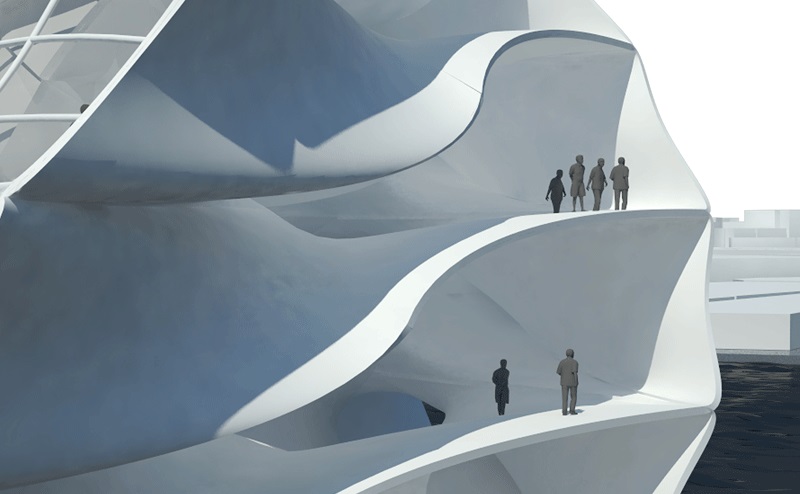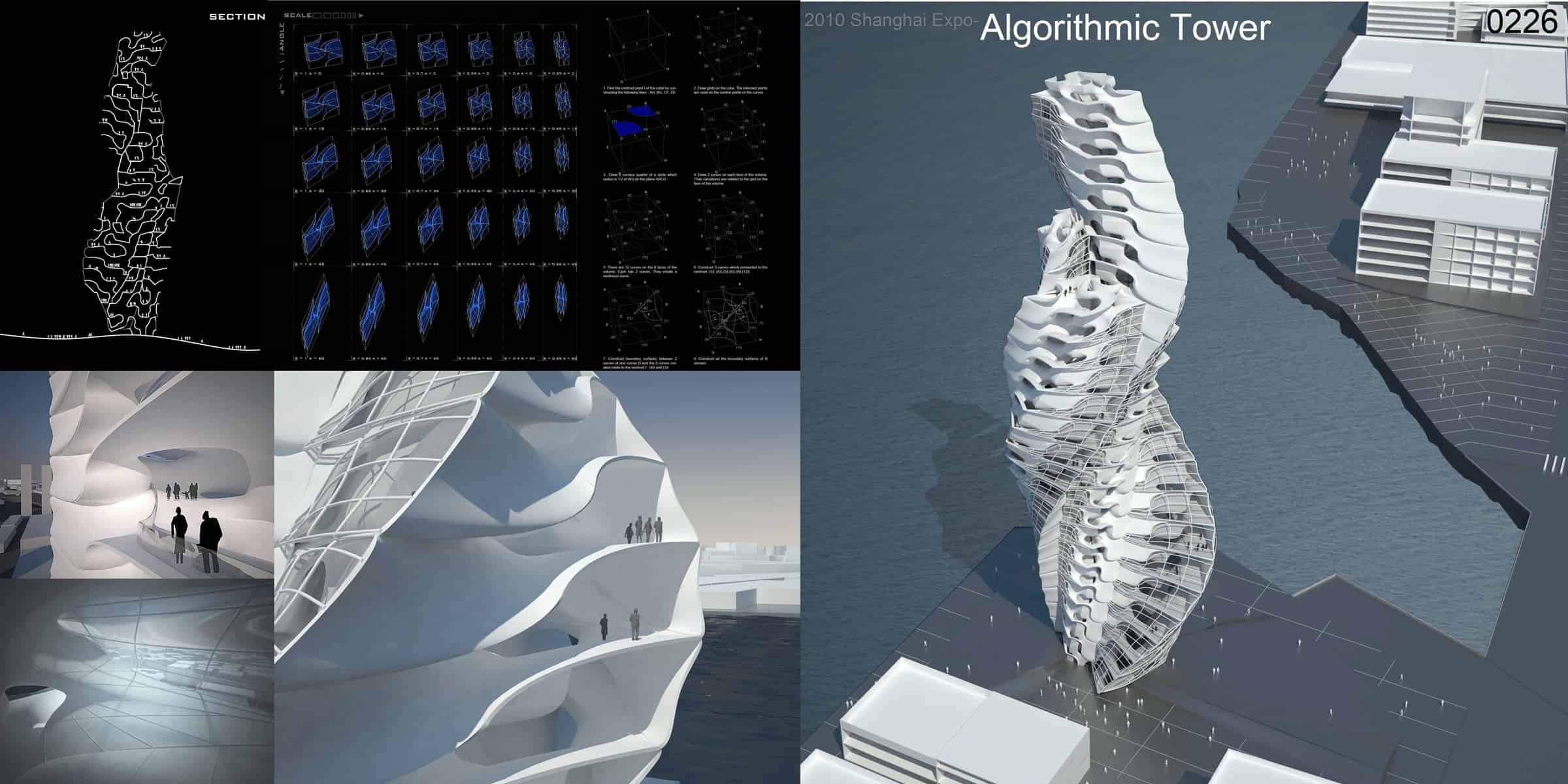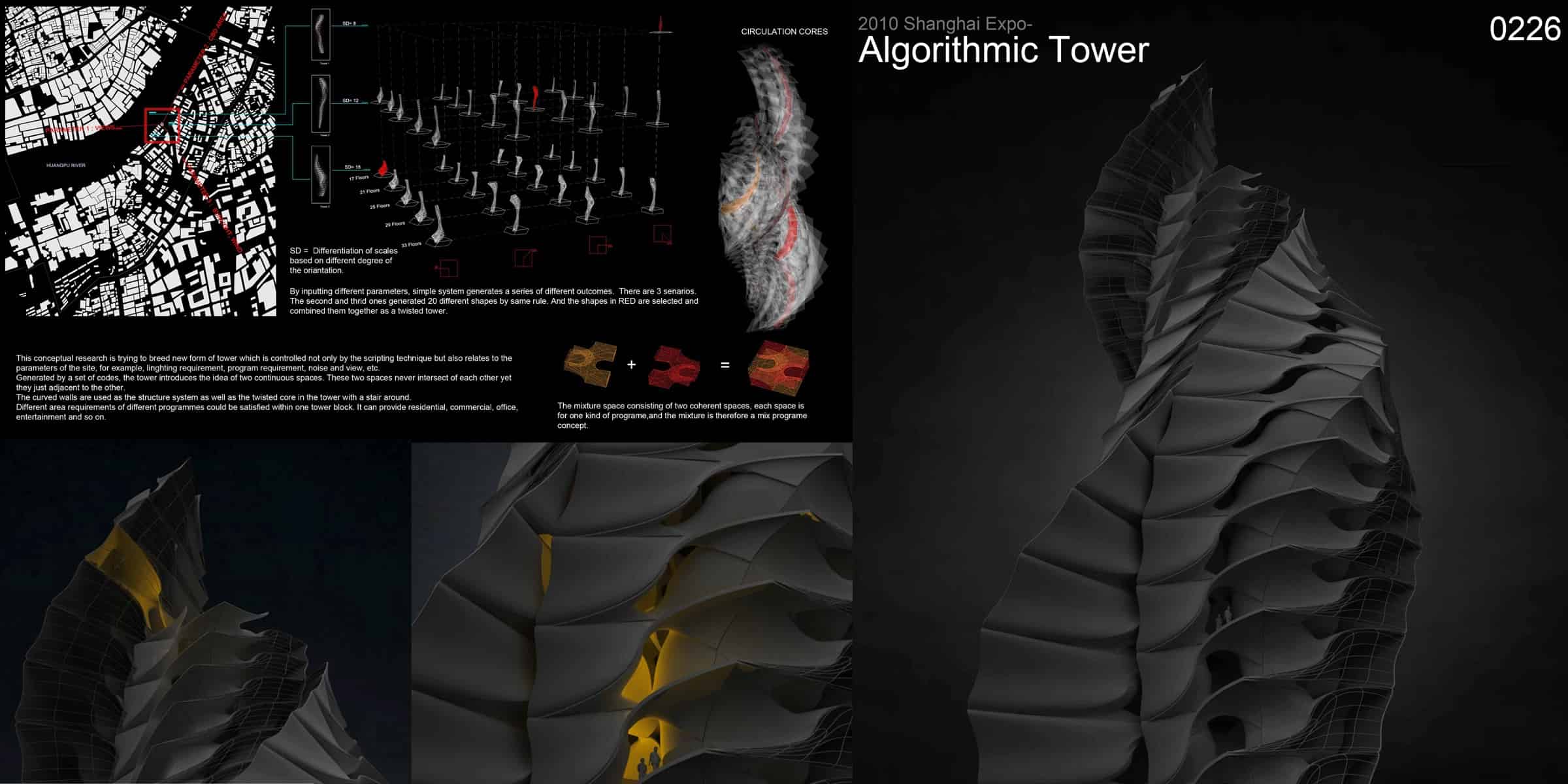Special Mention
2009 Skyscraper Competition
Junkai Jian, Jinqi Huang
China

The cities of the twenty-first century embody extreme qualities of communication and complexity of interaction. In response to the new urban demands the Algorithmic tower employs a code-based scripting methodology that configures higher orders of complexity required by a new kind of aggregation logic. It is coded with specific rules for growth and subdivision that articulate spatial organizations with a mathematical approach.
The Algorithmic tower is formed by cells that are divided into three distinct continuous non-intersecting volumes that allow interplay between indoor and outdoor spaces. These interacting spaces maintain their character, while adapting to growth, and gradually transform into a series of vertical aggregates. The skin wraps and changes its shape, porosity and character in response to the indoor spaces which vary in dimensions, according to the proposed parametric growth. The cells grow vertically and spirally, creating curved modules that are locally controlled with a set of rules for program, density, orientation, and expected growth.
The Algorithmic tower contains three interconnected towers in play with each other. The first is the vertical circulation volume with the stairs and the elevators. The second one is formed by the private spaces while the third includes the common and recreational areas.
The Algorithmic tower relies in various mathematical equations for gradual transitions and space subdivisions. Its system could be applied at an urban level to create a city that reacts and adjusts to different programs and events.


This work is licensed under a Creative Commons License permitting non-commercial sharing with attribution. https://creativecommons.org/licenses/by-nc-nd/4.0/



